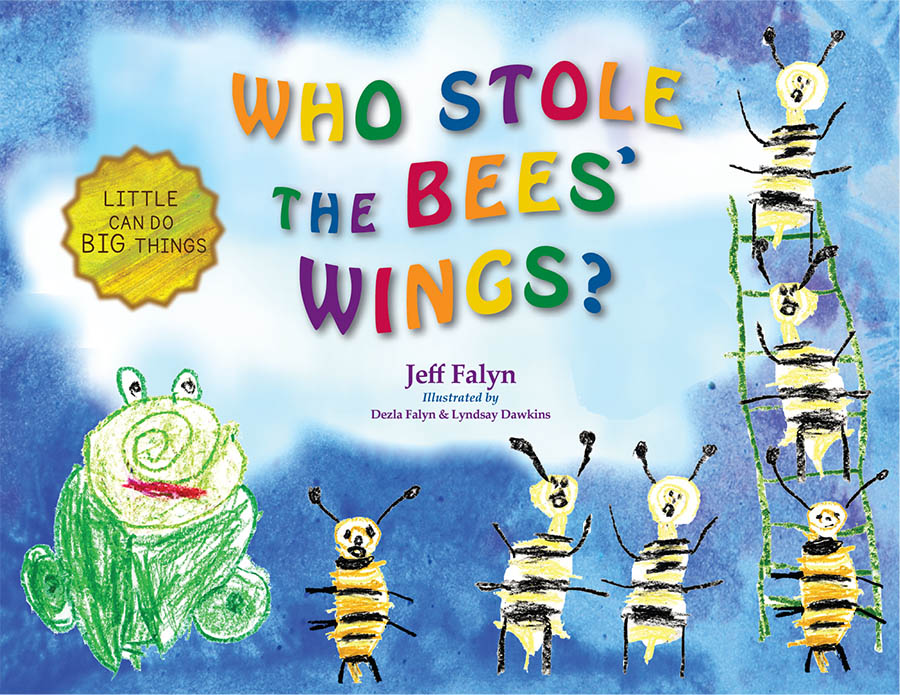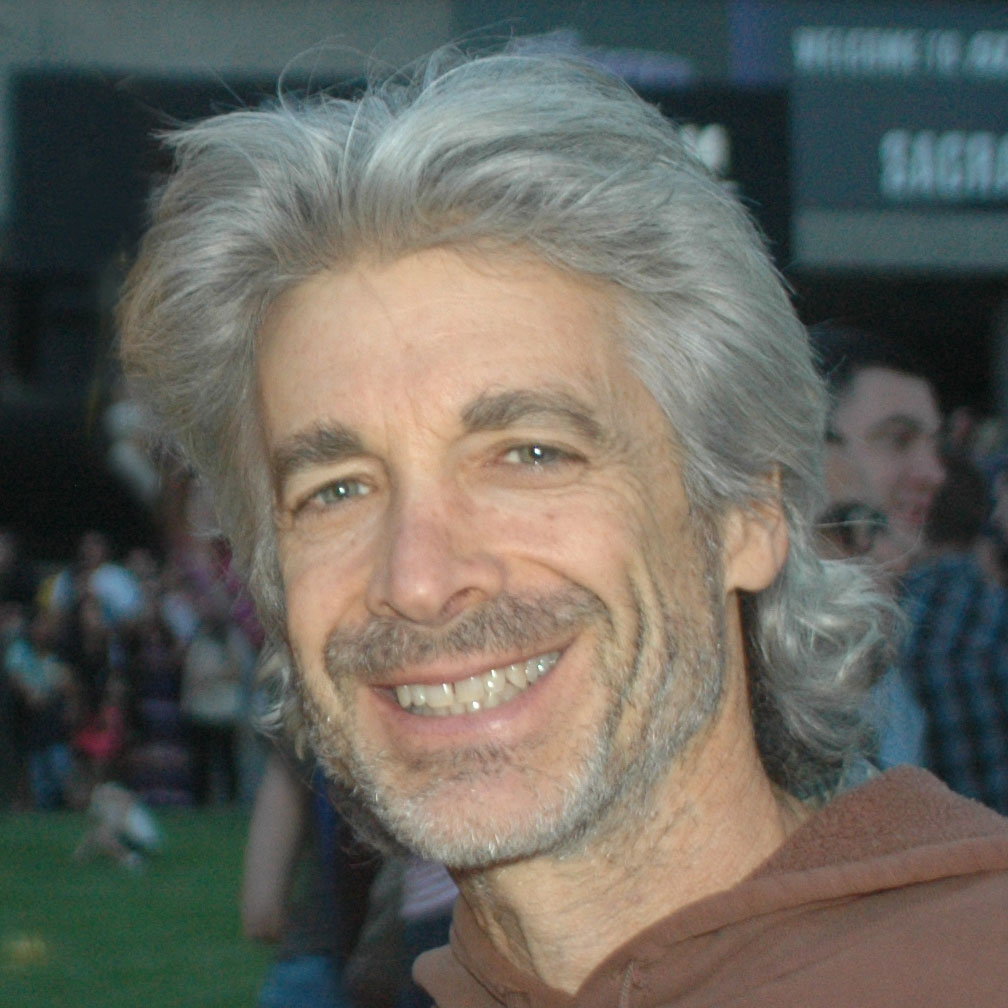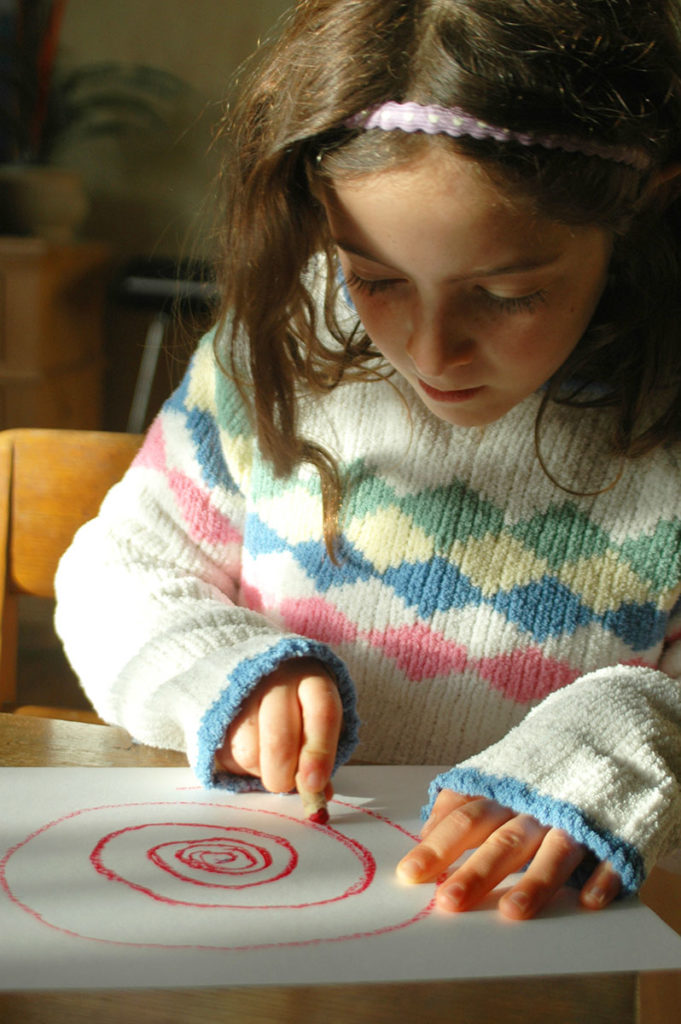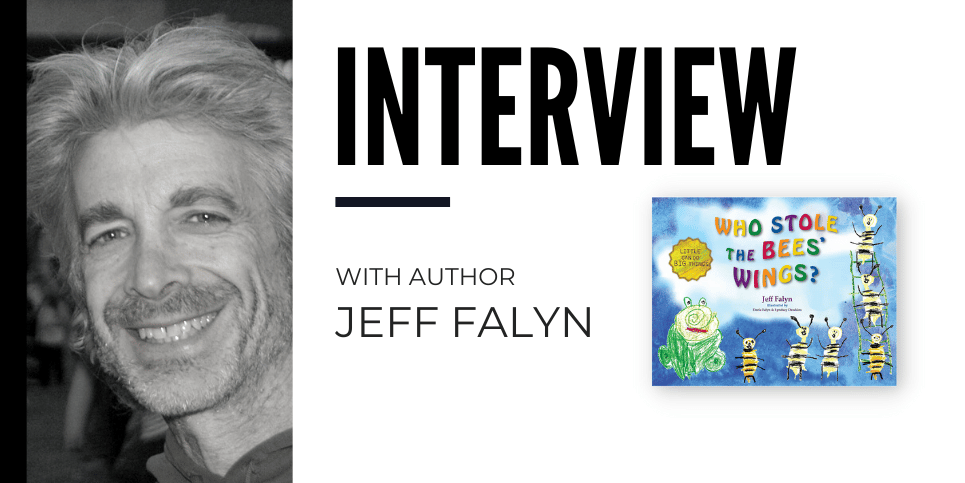An interview in partnership with The Children’s Book Review and Nature’s Theater
In Who Stole the Bees’ Wings?, author Jeff Falyn and mother-daughter illustrators Dezla Falyn and Lyndsay Dawkins have crafted a well-paced story that blends real-world environmental issues with fantasy elements that keep kids turning pages. In this interview, Jeff discusses the story, the art, and the concept of “little can do big things.”
What inspired you to create a book about disappearing bees? How did you know this story needed to be told?
Jeff Falyn: Bees are disappearing across the planet in alarming numbers. There are many reasons for their decline. In the book, I don’t go into detail about the bee’s plight. Instead, I frame the issue in a fanciful tale about missing bees and stolen wings. That’s more appropriate for young children. They are introduced to why bees are important at an early age and, ideally, become lifelong advocates.
Using children’s art as illustrations is a very unique idea. How did you come up with the idea to use a child’s drawings to help tell your story?
It happened organically. I was writing the story, and my wife Lyndsay encouraged our six-year-old daughter to draw the characters for fun. We didn’t plan to use her drawings for the book, but the feelings they evoked fit the story. The character’s spiral faces were so delightful that Lyndsay and I shrugged our shoulders and said, “OK, we have an illustrator.” We don’t know why she drew the spiral faces, but we love that she did.
What do you feel makes a good children’s book? How do you think you incorporated these ideas into “Who Stole the Bees’ Wings?
Here’s my recipe for a picture book. Start with a quest or goal, add some humor, maybe a pinch of silliness, introduce (and repeat) simple themes, and serve it to children, so they identify with the story’s hero.
The concept of “Little Can Do Big Things” is key to this story. How do you feel you best demonstrated this for younger audiences?
Throughout the book, Frog says, ‘I’m little. What can I do? He doesn’t believe he can do anything important. Even though he feels that way, he still tries to help. Eventually, our brave little hero learns what he’s capable of and does something big.
Do you have plans to continue writing more books with “Little Can Do Big Things” theme?
Yes, I’ve already written the next book. My manager said, “hush-o, on the next book-o,” but what the heck, I’ll tell you. Mr. Big wants people to get rid of everything small. Concerned for their own survival, the World of the Small must stop him before he succeeds in his villainous ways. “Muah-ha-ha,” says Mr. Big.
You used many common forest animals as characters. How did you come up with your characters and their personalities for this story? Specifically Know-It-Owl and Frog.
Before I answer your question, the frog and the owl wanted me to tell you they have a slight objection to being called “common.”
A quest story usually has a simple, naïve character who meets a knowledgeable guide. The guide sets the path, and through experience, the simple character learns. A frog as simple and an owl as wise seemed obvious choices. What’s that? Oh, OK. The frog just told me he didn’t like being called “simple.” Oops!
Who Stole the Bees’ Wings is a book suitable for readers that use basic vocabulary and short sentences. Did you find it difficult to craft a story using a limited vocabulary and being bound by other limitations of the reader?
Understanding a young audience’s parameters guides me in succinctly expressing a story. For example, the previous sentence is not simple and has no place in a children’s book. Heck, it shouldn’t even be in this answer.
What did you find most challenging when writing this story? How did you deal with this?
My first draft of Who Stole the Bees’ Wings had 4,000 words. 4,000! Most picture books have 500 to 1,000 words. How was I going to delete over 3,000 words? Like someone who sits on a porch and whittles a piece of wood, I whittled the words away draft by draft.
Interestingly, the final draft contains the same structure, themes, and characters as the first—the same story with fewer words. It happens every time. I just have to sit on the porch and whittle.
Who is your favorite children’s book author? Do you feel like they have inspired your own writing style?
Fairytales. As a writer, my inspiration came from a genre, not one individual author. I’ve read and re-read thousands of fairytales from countries all over the world.
Is there anything else you would like to share with our readers?
I consider it an honor to write stories for young children. The experience allows me to connect to my inner child. And staying in touch with my inner child keeps me kind of goofy.
About the Book

Who Stole the Bees’ Wings?
Created by Jeff Falyn
Illustrated by Dezla Falyn and Lyndsay Dawkins
Ages 4+ | 32 Pages
Publisher: Nature’s Theater | ISBN-13: 9781940255064
Publisher’s Book Summary: Who would be silly enough to steal the bees’ wings?
Join a little frog and his friends on a quirky quest to find the missing wings.
“The bees are gone,” says a blue flower. “I need help.” The frog thinks he’s too little to do anything big, but the animals will have less food to eat without bees. He decides to try. At first, he’s alone, but soon a naughty fox and a Know-It-Owl with a Magical Book Tree join him on the quest. Together, they follow the clues until they find a whole bunch of silliness in the forest.
Who Stole the Bees’ Wings? is a funny eco-fairy tale about:
- little can do BIG things
- standing up to bullies
- working together when nature is out of balance.
Children 4-8 and their parents smile and giggle, reading Who Stole the Bees’ Wings? This playful bedtime story also enchants level 2 readers and up.
Be the first one on your block to discover who stole the bees’ wings. How? Let your fingers fly and click BUY.
Buy the Book
About Jeff Falyn
Let me state this upfront; Jeff did not steal the bees’ wings. He does have a long history of writing whimsical eco-stories for young children. He has co-written 25 outdoor Walking Stories, and four theatrical stage plays. Thousands of children from the US and Australia have experienced his imaginative storytelling style. Who Stole the Bees’ Wings’ is the first book in the Little can do BIG Things series.
Learn more about Jeff and his stories at naturestheater.org.

About Dezla Falyn
At six years old, Dezla Falyn drew all the characters with oil pastels. In her creative flow, she gave all her characters spiral faces—we don’t know why, but we love them. The background art also evolved from her watercolor paintings at six.

About Lyndsay Dawkins
Lyndsay Dawkins spent many years in creative development and design for the entertainment business. She used her expertise in graphic design and transformed Dezla’s characters and art into a world for Who Stole the Bees’ Wings.

This interview—Jeff Falyn Discusses Who Stole the Bees’ Wings?—was conducted between Jeff Falyn and Jen Lemm. For similar books and articles, follow along with our content tagged with Bees and Nature Studies.

